Gérald Genta – artist, brand, the Picasso of watchmaking. Being the design mastermind behind industry icons like Royal Oak, Nautilus, Octo, Bulgari Bulgari, and many more, here’s the story of one of horlogerie’s most celebrated watch designers and his most notable contributions.
“Gérald’s artistic sensibilities could be applied to any field. If he were born French, he’d be a fashion designer – If Italian, he’d be designing luxury supercars – but because he was Swiss, he designed watches.” – Évelyne Genta, wife of late Gérald Genta.
The 70s was a busy time for Gérald Genta. After all, consulting with Audemars Piguet, IWC, Patek Philippe, Cartier, and more, on industry-breaking designs while hop-skipping between Paris and Geneva, demands quite a tedious schedule for one man. But why were Geneva’s timekeeping titans bidding big on a singular freelance watch designer? – This is the story of how a humble artist from Geneva became the Picasso of watchmaking.
Gérald Genta was born in Geneva on May 1, 1931, to Swiss-Italian parents and grew up studying jewellery and earning a Swiss federal diploma. Genta was an artist at heart, rarely found without his drawing toolbox. His process began with a compass-drawn circle and spit it down the middle vertically and horizontally with two ruled lines – just like that, his canvas for creativity was ready. With his work and designs, Genta never aimed to build ‘big’ brands, but ‘beautiful’ ones. It was for this reason, that the industry revered Gérald Genta as a leader, not because of force but for crazy inspiration and innovation. Furthermore, he began his journey during the Quartz crisis, he could give him credit for bringing back the mechanical watch.
His first creation, the ‘Polerouter’ for Universal Geneve was conceptualized and designed to commemorate the Scandinavian Airlines System’s (SAS) new flight route from Copenhagen to Los Angeles, by way of the North Pole. Genta hence titled the watch the ‘pole-router’. The design language was fairly simple, but it pulled one interesting mechanical feat out of the hat – countering magnetism while travelling around the Earth’s pole is critical as it may wreck most timing instruments, so, anti-magnetism was prioritized with this model. The dial boasted a crosshair and chapter ring which featured a coin-like finish for visibility in the dark. Its case measured a modest 34.5 millimetres.
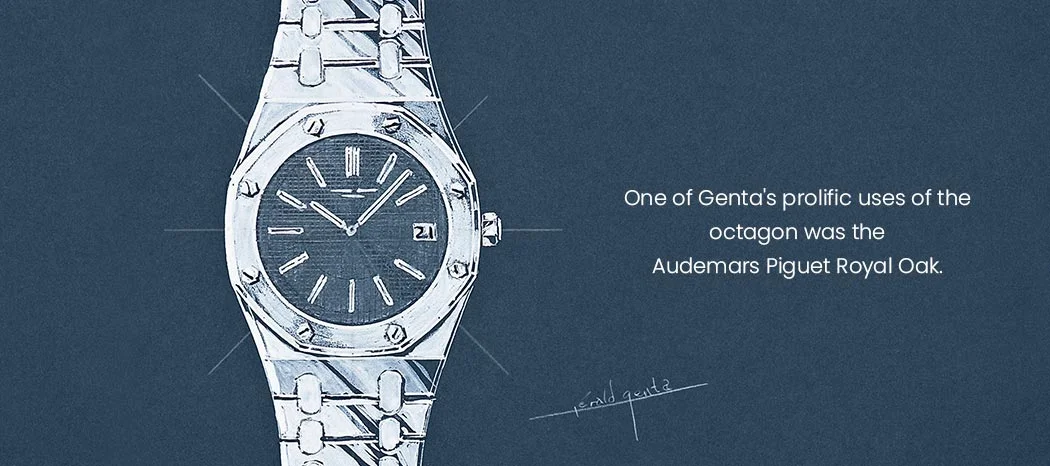
Scroll through Genta’s archives, you’ll realise that the Octagon prevailed as a vantage point for his creativity. He believed that the octagon was the perfect circle with just the right number of angles. One of his prolific uses of the octagon was the Audemars Piguet Royal Oak. In 1970, Genta received a call from AP’s Georges Golay, a man with a vision for his company who knew how to perfectly harness Genta’s creative brilliance. Going counter-culture and with the weight of the Quartz crisis, Golay asked Genta to draw him the most expensive sports steel watch in the world – to be conjured by the next morning. Genta, unphased by the deadline, got to work and presented the Royal Oak. Genta wanted this watch to be waterproof and so he looked to man’s apparatus for deep-sea diving. The brass diving helmet which featured a circular window panel bolted onto the helmet is what inspired the Royal Oak’s design. Putting all of this together, Genta conjured an octagonal bezel with eight screws securing the case and a deep blue dial, reminiscent of the ocean.
Soon after the Royal Oak hit the market, it caught Patek Philippe’s attention – wanting Genta to recreate that luxe sports watch magic for them too. The challenge Patek faced was that their steel watches were marketed as dress watches which appealed to their customers. Probing into new territory, Genta met with a Patek executive to discuss design. While so, Genta requested the waitress for a napkin and began sketching. In merely five minutes, Genta created the first iteration of the Nautilus – a model that would go on to dominate the watch market for decades to come. The idea came from a porthole on transatlantic ships with an oblong shape close to Genta’s signature octagonal silhouettes. The title ‘Nautilus’ was given after a fictional submarine from Jules Verne’s Twenty Thousand Leagues Under the Sea. The Nautilus (ref 5700/1) was introduced to the world at Basel in 1786 and quickly gained a ‘jumbo’ badge due to its 42-millimetre form.
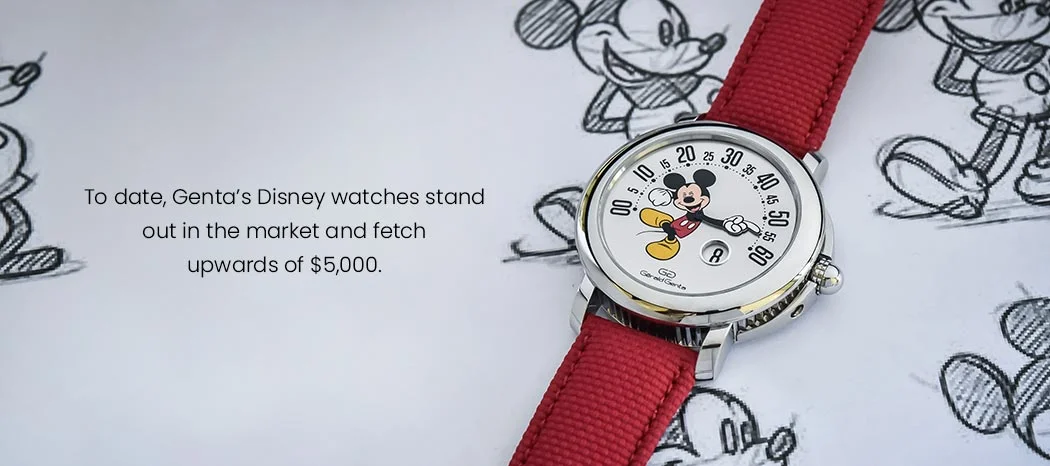
Entering the 70s, Gérald Genta had his eponymous brand, striving to create timepieces that challenged the status quo of horology. After the sporty Royal Oak and Nautilus, he desired to venture watchmaking into an even more playful territory – cartoon characters. After approaching Disney in the 80s, he not only drew Mickey Mouse on his dial but also incorporated a highly unique case, jumping hours and retrograde minutes. To date, Genta’s Disney watches stand out in the market and fetch upwards of $5,000.
During the 90s, Genta was the watch designer to have in your corner. His creative strides were distinctly stunning, refreshing, and complicated in their own right. His magnum opus, after five years of stringent R&D, was the Grand Sonnerie, which he created alongside Pierre-Michel Golay of Franck Muller for his expertise in movements. Comprising 1000-plus parts and a fleet of complications including a Westminister Four-Hammer chime, Perpetual Calendar, and more, it stood as a paean of Genta’s creative evolution. With only 25 making it to production, the Grande Sonnerie slated in at $900,000.
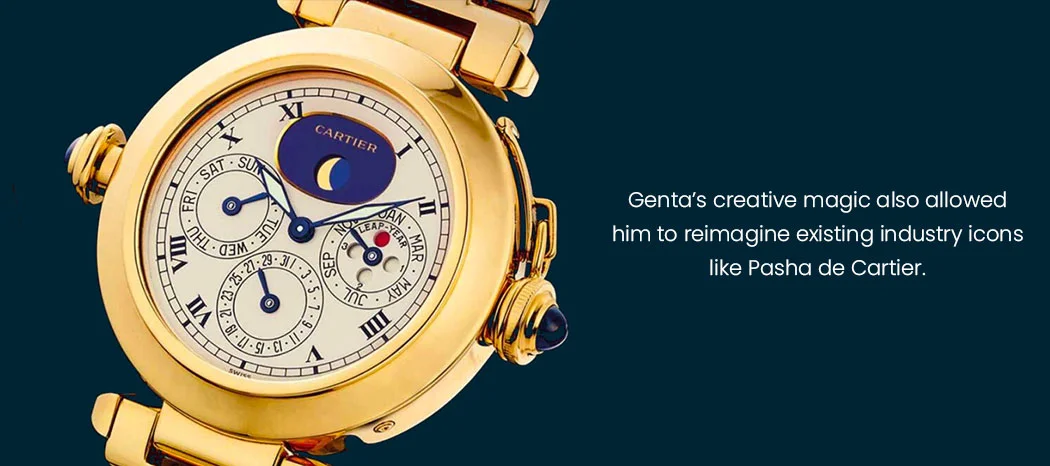
As a freelance watch designer, Gérald Genta helped numerous brands develop and launch new models – while so, Genta’s creative magic also allowed him to reimagine existing industry icons. In the mid-80s, Cartier got a hold of Genta, requesting him to recreate the Pasha. What was a paean of simple elegance and French suave, needed a dose of ‘sporty luxury’. Genta switched the case for gold and as requested turned it into a circle – allowing the brand to expand into new avenues. Retaining a few design cues from the original Pasha like the Vendome lugs and signature blue sapphire crown, Genta’s remix turned the model into a success, and to date, Cartier stays true to this iconic design. Omega’s flagship model, the Constellation needed a rework after seeing a slight sales slump in the 50s – Who’d they call? The one and only, Gérald Genta. Similarly in the 70s, IWC needed to retouch their bold-yet-traditional model, the ‘Ingenieur’ which means ‘Engineer’. Genta beefed it up to 42 millimetres and swapped out the thick steel case for a much sporty one.
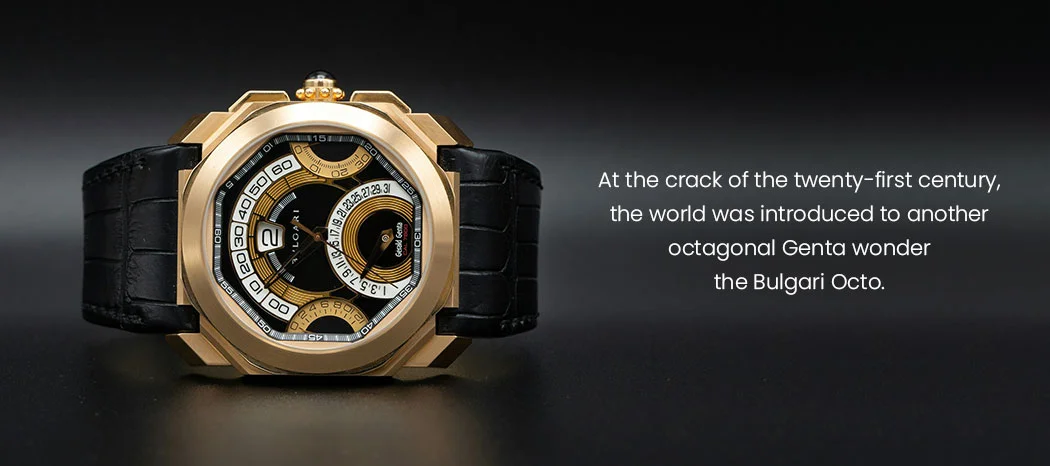
At the crack of the twenty-first century, Bulgari acquired Genta’s company, acquiring rights to his fleet of never-seen-before designs too. Soon, the world was introduced to another octagonal Genta wonder – the Bulgari Octo. It boasted a brooding, sharp steel case with brilliant cuts, proving to be the perfect canvas for creativity and mechanical brilliance.
However, this isn’t the first time Bulgari tapped Genta for a horological wonder. The Rome-based jeweller modelled their new eponymous model after an ancient Roman coin. Against its circular, golden bezel, were sharply angled lugs and a dial of simple elegance – the Bulgari Bulgari seemed more akin to high fashion than horology.

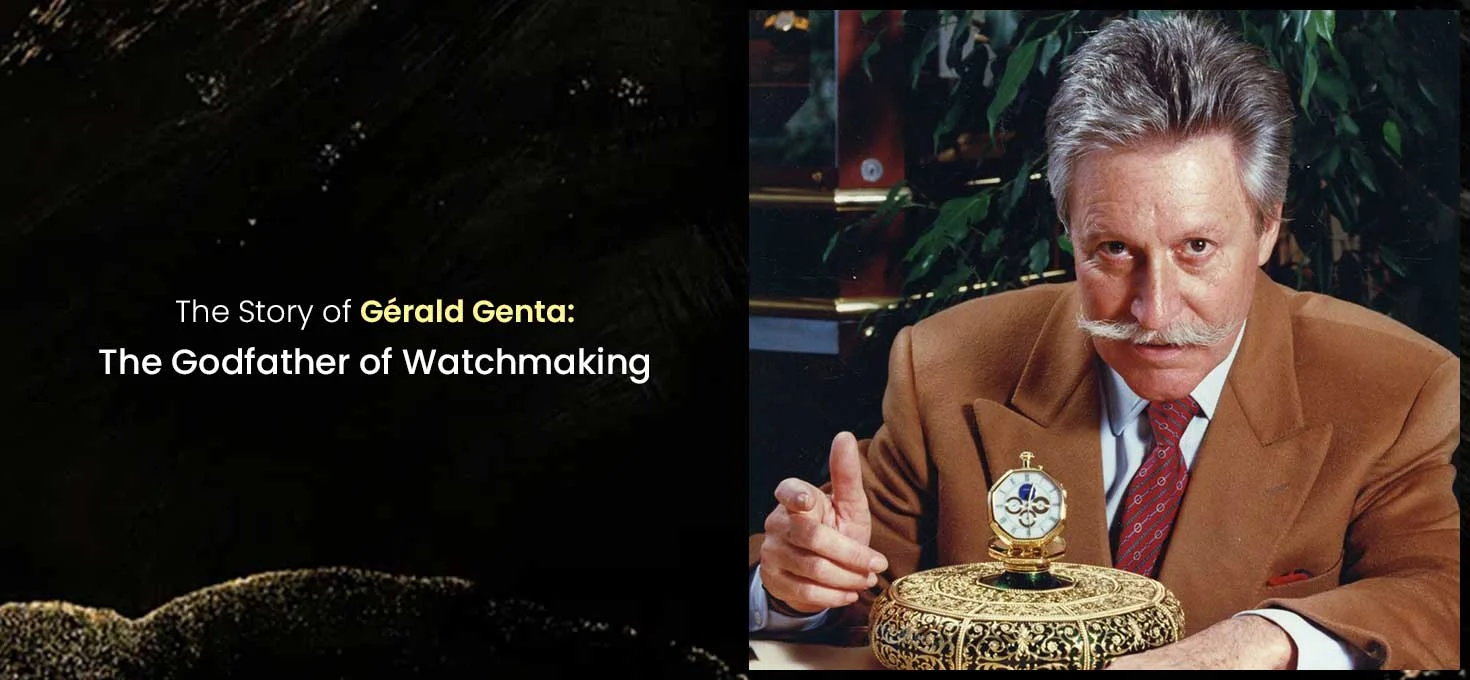
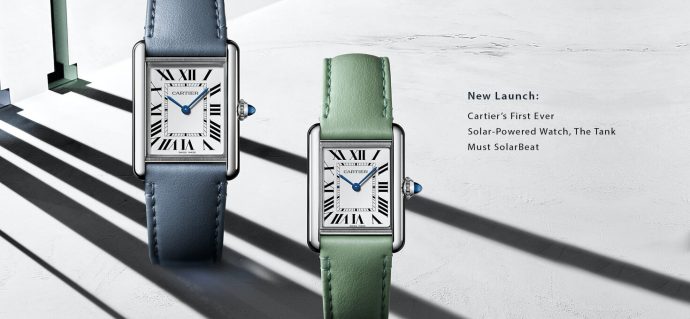

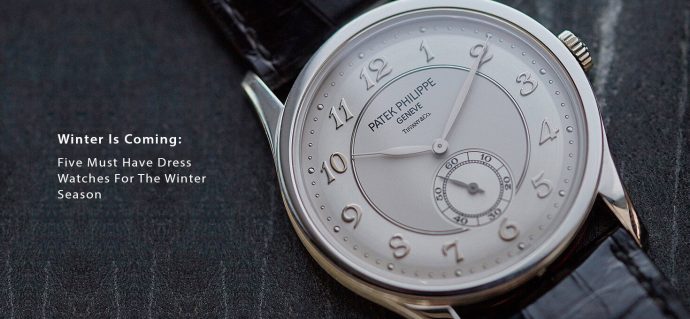
Recent Posts
Recent Comments
Archives